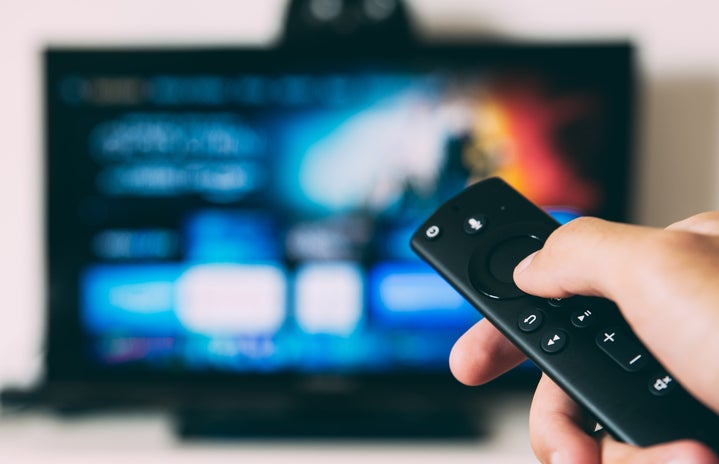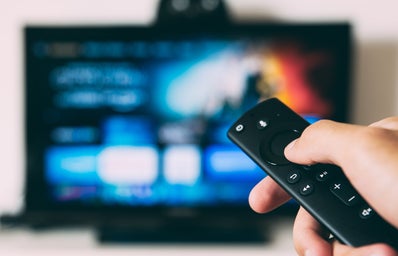Warning: the following article contains spoilers for the “Avatar: The Last Airbender” live-action.
If anyone knows anything about me at all, they know that Avatar: The Last Airbender is one of my favorite shows of all time. I have tea cups, posters, stuffed animals, and even a tattoo of Tui and La, the two koi fish from the end of season one. When Netflix’s live-action version of my beloved show came out, I knew that I had to watch it and compare it to the cartoon. Here are my thoughts on the ATLA live-action.
First, I didn’t enjoy how they combined different episodes of the cartoon together. Why was so much of the plot crammed into Omashu? The secret tunnel, the introduction of Jet and the Mechanist’s characters, and nods to Zuko and Iroh’s backstory are all shoved together in two episodes. All these subplots (and more) are important to both the character development and the overarching plot. With it all being crammed into two, 50-minute episodes, it loses the foreshadowing and the character development. In the cartoon, the secret tunnel is used to show us the crush Aang has on Katara, which foreshadows their relationship in the future seasons. In both Jet and the Mechanist’s respective episodes, it adds to the overall development of Katara and Sokka’s characters since they both get betrayed by victims of war. By combining the distinct episodes from the cartoon together, the live-action loses some of the essence that is held dearly by fans of the cartoon.
Going along this point, why were Sokka and Katara able to get into the spirit world? The whole point of having an Avatar is that he is the bridge between the natural world and the spirit world. In this episode, they also combined the elements of Koh, the face stealer, who in the cartoon steals faces if they show emotion, the episode of the swamp, where each of our three main characters is faced with visions of their past, and the introduction of Wan Shi Tong, the spirit of the library. In the live-action however, Koh does not steal the faces despite our characters showing a great deal of fear, Aang does not get the vision of his future earthbending teacher (Toph), and Wan Shi Tong is reduced to nothing but a guide and we lose the episode of the hidden library (which happens to be one of my favorite episodes and I’m totally not bitter that we don’t get to see it). This makes me wonder if in future seasons we will get to experience Aang losing Appa to the sandbenders.
Another issue I have with the live-action is the fact that they changed the characterization of most of the characters. In the live-action, Katara doesn’t have her rage, Sokka isn’t sexist and Aang is way too serious. Although these don’t seem like big changes, they are vital for their character development. In the cartoon, Sokka is able to further develop his relationship with Suki because he is sexist and doesn’t believe that a woman could be a powerful warrior. He later accepts defeat and goes to Suki to be trained, which not only adds to his character, but also prepares him to be the warrior he is in the series finale. With Katara, her rage is important as it drives a lot of her actions. In the cartoon, Katara is outraged by Sokka’s sexism, which in turn, breaks the iceberg that Aang is trapped in, thus starting the series. Aang is also supposed to be a fun-spirited kid — his main thing is that he never wanted to be the Avatar, and throughout the series, we watch as he becomes more serious. They also ruined Bumi’s character. In the cartoon, Bumi is depicted as a crazy old king, however, he is not bitter or mad at Aang for disappearing. In the live action, Bumi is a bitter old man who is upset that Aang left when he should be excited to see his old friend. Also, the challenges that Bumi poses to Aang are subpar at best — the point of Bumi’s challenges in the cartoon is to show Aang that there are creative ways to solve a problem and that the first solution may not always be the best one, which is vital when it comes to Aang finding a different solution to ending the 100-year war.
Although the live-action did a lot of things wrong, the one thing I think they got perfectly correct was the casting. In interviews with the cast, their personalities are almost identical to their respective cartoon versions. However, the writers did not hold this true when it came to the script. The characters depicted by the live-action writers did not stay true to the actor’s personalities or the characters’ personalities as I said earlier.
Although I thought the casting was perfect, some actors, especially Azula (Elizabeth Yu) and Mai (Thalia Tran), have also been receiving a lot of backlash from the internet for not accurately portraying the characters in terms of looks. In the cartoon, both Azula and Mai are depicted to have sharp features, whereas, in the live-action, both characters have rounder faces and look like children. I do think that Netflix chose the correct actors and actresses for these roles, especially since they do look like children, which helps the audience to understand that they are simply just children tasked to save the world.
I also loved the way they showed us past moments in Iroh and Zuko’s relationship that we didn’t see in the cartoon. The addition of showing us the scene at Iroh’s son’s funeral and their interactions post-agni kai was powerful and helped us to further understand the relationship Iroh and Zuko have. I’m also glad that they stayed true to the Blue Spirit episode — this episode in both the cartoon and the live-action humanizes Zuko, setting him up for his character development arc and his friendship with Aang in the later seasons. Another thing I’m glad they kept from the original was the soundtrack. The original soundtrack has my heart, and the familiar intro and outro music warms my heart.
To be honest, the live-action was a little hard for me to get through — I had to force myself to watch the show, and this review doesn’t cover all the small, nitpicky issues I have, such as how they made Appa and Momo side characters and how we didn’t see Aang learn much waterbending. However, with the number of changes, it was still interesting to see how Netflix adapted this family favorite into something almost new (but not quite). Even though the live-action was not what I wanted it to be, I am incredibly excited about the new content that ATLA will be producing and releasing in the next couple of years, as well as all of the Zuko edits I will be watching when season three drops. With all that said, I will still be consuming any and all ATLA content — the good, the bad, and the ugly.


